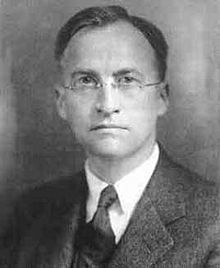George David Birkhoff | |
|---|---|
 | |
| Born | March 21, 1884 |
| Died | November 12, 1944 (aged 60) Cambridge, Massachusetts, U.S. |
| Nationality | American |
| Alma mater | Harvard University (AB, AM) University of Chicago (PhD) |
| Known for | Ergodic theorem Birkhoff's axioms |
| Awards | Bôcher Memorial Prize (1923) Newcomb Cleveland Prize (1926) |
| Scientific career | |
| Fields | Mathematics |
| Institutions | Harvard University Yale University Princeton University Radcliffe College |
| Doctoral advisor | E. H. Moore |
| Doctoral students | Clarence Adams Raymond Brink Robert D. Carmichael Bernard Koopman Rudolph Langer Charles Morrey Marston Morse G. Baley Price I. M. Sheffer Marshall H. Stone Joseph L. Walsh Hassler Whitney David Widder Kenneth Williams |
| Signature | |
George David Birkhoff (March 21, 1884 – November 12, 1944) was one of the top American mathematicians of his generation. He made valuable contributions to the theory of differential equations, dynamical systems, the four-color problem, the three-body problem, and general relativity. Today, Birkhoff is best remembered for the ergodic theorem.[1] The George D. Birkhoff House, his residence in Cambridge, Massachusetts, has been designated a National Historic Landmark.
- ^ Morse, Marston (1946). "George David Birkhoff and his mathematical work". Bulletin of the American Mathematical Society. 52 (5, Part 1): 357–391. doi:10.1090/s0002-9904-1946-08553-5. MR 0016341.